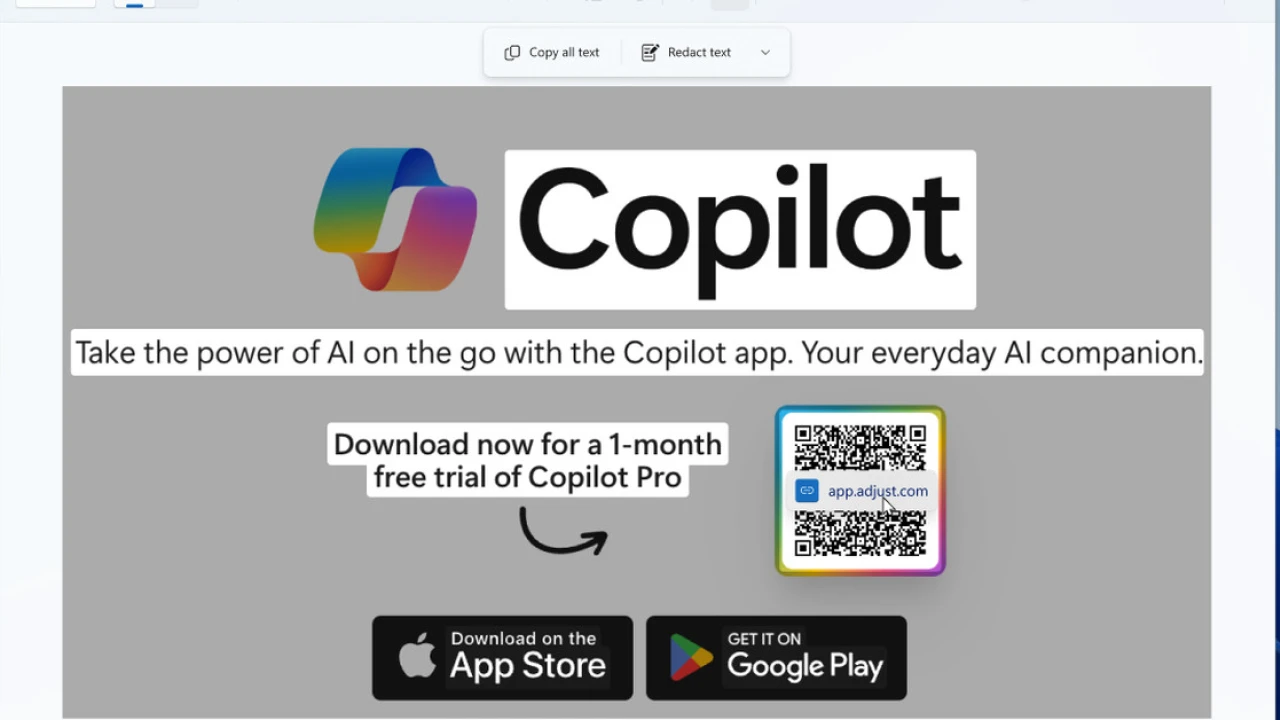Microsoft is finally adding an easy way to use QR codes inside Windows 11’s built-in Snipping Tool. A new update has started rolling out to Windows Insider testers today that will automatically detect QR codes in screenshots so you can open links from your PC. The Snipping Tool update also includes support for emoji.
-


LIVE | PTI big Victory in Reserved Seats Case | Supreme Court Historic Verdict | GNN
-


Justice Athar Minallah Complete Dabang Remarks of Hearing | Breaking News From Supreme Court | GNN
-


خان نے فائنل فیصلہ سنا دیا #gnn #imrankhan #decision #ptileaders #news #breaking #latest #video
-


Supreme Court Historic Verdict Over Reserved Seats Case | Govt Ends? | PTI Big Victory | GNN
Regional
What a Zoom cashier 8,000 miles away can tell us about the future of work
Is a new age of digital offshoring coming?

Questions of how a new technology will change the way we work have only become more pressing since OpenAI’s Chat-GPT burst onto the scene in late 2022. Since then, we’ve seen frenzied predictions of how AI will upend American jobs — perhaps even doing away with the need to work altogether. Some wonder if their careers will even exist in a few years. Chances are, they will, but the tasks they do might be different. How exactly that will happen can feel obscure, but it’s been happening in much the same way for decades if not centuries.
To put a human face on the way technology changes jobs, visit a fried chicken spot called Sansan Chicken in New York City’s East Village. There, the cashier takes your order over Zoom, from over 8,000 miles away in the Philippines. Another worker in the kitchen slides your order through a small window when it’s ready. These workers are employed by a company called Happy Cashier, which contracts them out to a handful of NYC-based restaurants. The big draw of Happy Cashier is that it saves the restaurants money, as the average hourly wage of a cashier in the Philippines is about $1, based on Indeed’s data. Happy Cashier’s “virtual assistants” make $3 per hour, according to the New York Times.
While video calling isn’t bleeding-edge tech, the Zoom cashier captures what often happens when an industry integrates new tech into its business model: Jobs don’t really disappear, they just shrink, along with their paycheck, and this degradation is presented as the natural outcome of automation and technological progress. Modern tech has allowed more industries to chop up jobs into smaller parts and to send many of those parts to underpaid workers overseas. The offshoring of American jobs is most immediately associated with the exodus of manufacturing work that kicked into high gear in the 1980s, but a great deal of foreign outsourcing has occurred in the digital age: think social media content moderation, customer support, and even virtual personal assistants. Silicon Valley can still be summed up by the famous labeling found on Apple products: designed in California, assembled in China. (Or, these days, the Philippines.)
Now, with AI poised to automate new industries, instead of commanding a salary of $50,000 per year for taking charge of a whole range of tasks from start to finish, you might eke out a fraction of that for doing just a part of the work, the rest of the tasks fulfilled by an AI function. It might mean that, with the aid of AI, your boss now expects you to produce twice as much in the same amount of time. It might mean that some or even most of your job is done by a poorly paid worker outside of the US.
If it sounds too far-fetched and pessimistic, the unfortunate reality is that the use of tech to degrade work that humans do is not novel — it’s been happening for hundreds of years.
A brief history of paying people less
Fears about what automation could do to human work date back centuries. In the 19th century, the Luddites were textile workers who smashed machines in protest of their employers using machines to replace them or reduce their pay. Introducing machines to boost productivity and reduce labor costs was a fairly novel idea — to workers of that day, it looked like employers were “quite literally stealing work, and therefore money and bread, as they put it, from the mouths of working people,” says Brian Merchant, journalist and author of Blood in the Machine: The Origins of the Rebellion Against Big Tech. Merchant explains that since then we’ve had 200 years of ideology saying that technology equals progress, a prevailing outlook that stifles any Luddite impulses.
According to labor historian Jason Resnikoff, “automation” was a term coined by a Ford executive in 1946. In the New Deal era, employers faced a problem. In a political climate where unions were powerful and popular, companies couldn’t just attack them outright. At the same time, there was an “almost universal technological enthusiasm” in this era, Resnikoff tells Vox, when we believed people would soon drive flying cars, go to the moon, and have a lot more leisure time. Corporations argued that their R&D labs were where technological innovation was born. It had its own momentum, as if multiplying in a Petri dish — tech itself, not corporate executives, was the inevitable force replacing jobs, or devaluing them.
“What’s wild is everyone agrees to that, including the unions,” says Resnikoff.
Unions of this era didn’t reject “automating” machines because standing against technology would brand you a backward-thinking opponent of progress. Unions had also traded control of how they worked, including production speed and what machines they would use, in exchange for benefits like health care, unemployment insurance, and pensions.
Far from ending work, or even reducing it, workers in a multitude of sectors — automobiles, railroads, coal mines — quickly found that they were laboring even harder. “It has just put more of the work on me, and they fired or laid off my colleagues,” explains Resnikoff, speaking for the workers. Until the 1960s, in the industries that “automated” quickest, the number of workers actually grew, he reports in his book, Labor’s End: How the Promise of Automation Degraded Work. Often, what was one job before would get split up into several parts, and the new work would become more repetitive, more boring, more like part of an assembly line. It was around this same time that offshoring, or sending jobs overseas, started to come into fashion.
The humans behind the robots
Now, in 2024, as employers scramble to adopt AI technologies, we stand at the edge of what might be another wave of atomizing jobs and shipping them to nations with cheaper labor. A 2022 report from the policy think tank RAND Corporation predicted that with remote work becoming ubiquitous alongside the explosion in AI enthusiasm, “the greater a sector’s exposure to AI, the more likely it is to offshore jobs to lower-income countries.”
What we call “automation” has long meant humans toiling alongside machines, rather than machines replacing humans entirely. A lot of supposedly automated tech, including AI, is actually assisted by a mass of human laborers — often in Asia, Africa, and South America. Amazon recently discontinued its Just Walk Out service in its grocery stores, which let customers leave without checking out their items because the store’s sensors automatically detect what they had picked up in store. News of the wind-down went viral when people learned that this technology had needed human workers in India to double-check that it was tallying checkout items correctly. There was also some surprise when Presto Automation, an AI drive-thru technology used by fast food chains like Carl’s Jr. and Hardees, revealed that it used human workers overseas to fulfill, review, or correct the vast majority of orders. The robotaxi company Cruise, which suspended its operations after one of its cars ran over a woman last fall, has said that its driverless cars received remote human assistance about every four to five miles.
What’s more, automated tech is trained (and continuously improved) with the blood, sweat, and tears of human workers — like the annotators who label and sort data that ChatGPT learns from. On digital “crowdwork” platforms, such as Upwork, workers complete small online tasks, like identifying objects in images, that computers have trouble doing — and are paid pennies for each tiny job. One 2021 paper estimated that there were 14 million workers registered on such crowdwork platforms who had completed at least one task.
Amazon nodded to the all-too-common illusion of intelligent, autonomous machines in naming its crowdwork platform Mechanical Turk, which was a fake chess-playing automaton in the 18th century that in fact housed a human chess master. Launched in 2005, it became one of the biggest crowdwork sites around the world. Remotasks, a newer crowdwork platform owned by the AI data provider Scale AI, boasts that over 240,000 “entrepreneurial taskers” work for them currently — many in the Philippines, under conditions that one AI ethicist described as “digital sweatshops.” These taskers often complain that their payment is delayed, and that’s not to mention that the pay is low to begin with, at times not meeting minimum wage in the Philippines — currently about $10.67 per day in the Manila metropolitan area.
The truth behind AI and automated tech plays out like the end of a Scooby Doo episode. Surprise! Behind the spooky ghost is a real, solid human being. As the filmmaker and writer Astra Taylor put it, it’s “fauxtomation.”
Tobias Sytsma, an economist at RAND and the author of the report, explains that automation might hit new kinds of jobs — not so much in manufacturing jobs this time, but jobs in sectors that produce intangible goods, affecting who we often call “knowledge” workers. One potential target is software development, says Sytsma. Large language models like ChatGPT have been trained on a lot of code, and “we’ve seen companies use offshore developers in the past,” he tells Vox. He notes health care may also see a lot of AI adoption.
Instead of thinking of how to design a piece of code, a software developer might now merely review the AI’s output and fix any errors. Instead of translating a book from start to finish, the human translator makes smaller tweaks for style. For each piece of work, the rate of pay shrinks. “You talk to illustrators, you talk to writers, you talk to copywriters — and freelancers especially — and you hear that they have already lost large percentages of their work that they would have been getting this time last year,” says Merchant. Some workers in creative fields have already embraced using generative AI as part of their workflow, allowing them to set lower prices while also producing at a quicker pace.
This sort of hybrid model is actually ideal for most employers, says Resnikoff. “The machine cheapens the labor, and then the labor allows you to not have to invest too much in fixed capital, which are the machines.”
The future of automation is still unwritten
Techno-optimists often make sweeping statements about the radical changes new technologies will bring — like declaring that we’re in an “AI revolution” that will redistribute social and financial power. People are led to believe that this mysterious, awe-inspiring tech will itself be a transformative agent. We can gird ourselves, but the transformation is coming whether we want it or not.
The Zoom cashier shows how tech is usually deployed by companies in the same mundane (if discomfiting) ways as before: to save money, skimp on labor costs, and even skirt labor law, as in the case of countless gig platform companies that continue to classify their workers as independent contractors. The workers don’t have much say in how the tech impacts them. “We have this very non-democratic mode of technological development that has more or less been in place for 200 years,” says Merchant.
As Resnikoff points out, if people want to change that, the first step is recognizing that automation isn’t inevitable — and certainly not in the way employers would like to implement it. Workers most keenly feeling the threat of employer-imposed automation have been organizing and putting up a fight, whether it’s gig workers trying to form unions and improve their working conditions or Hollywood screenwriters with the Writers Guild of America last year winning some provisions around AI, including that AI-generated writing can’t be used as a source material that a human writer might later spruce up. (Disclosure: Vox’s editorial staff is unionized with the Writers Guild of America, East.)
In the post-war period, when people believed that tech would end work altogether, the suggestion that machines should not be brought into the workplace might not have been taken seriously. But amid the labor momentum galvanizing American workers right now, there seems to be more awareness that new tech like AI isn’t a force of nature they must accept.
“A worker today can say, ‘you’re bringing this machine, but you’re just making me compete with some poorly paid Filipino worker who deserves better him or herself,’” Resnikoff says.
When I visit Sansan Chicken on a Wednesday afternoon, the Zoom cashier is at first the only visible employee in sight, a floating head amid a greenscreen background. I ask her what she recommends — well, what’s most popular on the menu, anyway — and based on her response I order the karaage fried chicken. She notes that if I get the combo it comes with fries and a drink. After I pay, on a second screen next to the Zoom call, a standard tip screen pops up. The touch screen, however, is unresponsive. An in-store employee notices and tries to help, but to no avail. Another employee in the kitchen calls my order once it’s ready, sliding the tray out a narrow window. The Zoom cashier greets every customer who comes through the door, but most don’t respond. A few feet from her, there’s a digital kiosk that several customers opt to use instead.
Technology
Windows 11’s screenshot tool is getting QR code scanning and emoji support
Microsoft is adding a QR code scanning feature to Snipping Tool in Windows 11. 3D emoji support will also be part of an update that’s coming soon.

The automatic QR code detection will appear if you enter the text actions part of the canvas in the Snipping Tool and will highlight the QR code and its clickable link. If you’re an emoji fan, then you’ll be able to add Microsoft’s 3D emoji to your screenshots. This new option is part of the shapes toolbar, and any inserted emoji can easily be resized and moved around on top of your screenshot.
Speaking of the shapes toolbar, Microsoft is adding the ability to change the opacity of shape fill and the outline colors. The ruler tool is also being reintroduced, and you can toggle this on or off with the CTRL + R keyboard shortcut.
Alongside this Snipping Tool update, Microsoft is also updating the name of the AI-powered Pain Cocreator feature. It’s now becoming Image Creator, but it’ll work exactly as it does right now to let you create images from a text prompt.
Sports
UFC pioneer 'One Glove' Jimmerson dies at 61
UFC pioneer Art "One Glove" Jimmerson died Wednesday at age 61.

Jimmerson fought at UFC 1 as boxing's representative. He'd been a successful pro boxer in three different divisions and represented his discipline at UFC 1 on Nov. 12, 1993. He famously wore only one glove into the cage, believing he could jab with that hand and use his power hand, his right, to knock out opponents.
But that night, he ran into eventual UFC 1 winner and future MMA legend Royce Gracie. Gracie took Jimmerson down before he could land a punch, and Jimmerson tapped out in 2:18. It was the first submission in UFC history.
In later years, Jimmerson trained fighters, ranging from pros to beginners, in the Los Angeles area.
"People can say whatever they want about Art Jimmerson," iconic former UFC ref John McCarthy said. "But Art Jimmerson was a man who practiced an art -- the art of boxing -- and became incredibly successful with it. He was brave enough to take that art and test it against something he had no knowledge of."
-

 Pakistan 2 days ago
Pakistan 2 days agoFees of fast-track passports increase again
-

 Pakistan 22 hours ago
Pakistan 22 hours agoCM Punjab approves laptop scheme
-

 Business 1 day ago
Business 1 day agoPakistan's forex reserves swell over $9bn on IMF inflow
-

 Business 2 days ago
Business 2 days agoGold price drops by Rs800 per tola
-

 World 18 hours ago
World 18 hours agoMagnitude 5.8 quake hits Taiwan
-

 Pakistan 2 days ago
Pakistan 2 days agoFalse flag operation of May 9 was pre-planned: Imran Khan
-

 Pakistan 1 day ago
Pakistan 1 day agoPerpetrator of May 9 will be in dustbin of history: CM Maryam
-

 Pakistan 2 days ago
Pakistan 2 days agoMay 9 to be remembered as a dark day in Pakistan’s history: Zardari













:format(webp)/cdn.vox-cdn.com/uploads/chorus_asset/file/25440615/ST_emoji.png)
